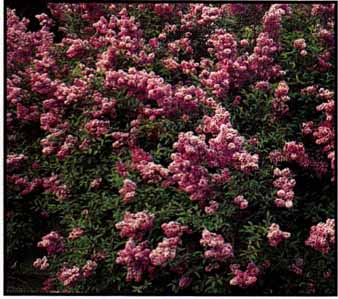Many homeowners view their defenses against fire mainly in preventive terms, a matter of guarding against such potential causes as an overloaded circuit, grease in an over heated pan, and so on. But because vigilance against fire hazards can never be completely foolproof, a defensive strategy should also embrace containment—ways of making it harder for a fire to spread.
Furnishings: A prudent first step is to take stock of your furnishings. Current consumer-protection laws require all mattresses and carpeting to be made flame resistant, but older mattresses and carpets generally have not been treated. Replace such fire-feeding items.
Walls and Ceilings: The walls of some houses may lack firestops to block the upward spread of fire; a few lengths of 2-by-4 can remedy this situation. The material of a wall or ceiling will also determine how rapidly fire will spread (below). If a wall or ceiling is finished in a flammable material—or, like some garage walls, not finished at all—the only good remedy is replacement with safer materials. For extra protection you can use “intumescent” paint, which reacts to the heat of a fire by puffing up into a layer of insulation.
Vegetation: A fire that attacks from outside is more difficult to defend against. But in brush-fire country, such as southern California, there is a way to make a house less likely to burn. Clear easily ignited vegetation from around the house with a scythe and replace it with lawn and fire-resistant plants.
FIRE RATINGS FOR BUILDING MATERIALS:
Flame-Spread Rating |
Wall or Ceiling Material |
Class A (0—25)—Excellent |
Masonry Glass Plaster Type X gypsum wallboard Flame-resistant acoustical ceiling tile Fire-rated fiberboard Asbestos-cement board |
Class B (26—75)—Good |
Most gypsum wallboard Pressure-treated wood |
Class C (76—200)—Fair |
Hardboard Particle board Most plywood Most solid wood, 1 ‘thick Most acoustical ceiling tile Fire-rated wall paneling |
Class D (over 200)—Poor |
Unrated fiberboard Unrated wall paneling |
Picking a safe material. Common coverings for walls and ceilings are grouped into four classes by “flame-spread ratings.” Established by the National Institute of Standards and Technology and national testing laboratories, these ratings are based on a comparison of the materials’ burning speeds with those of asbestos (specified as 0) and dry red oak (100). Class A and B materials are recommended by fire-prevention experts for halls, stairways, kitchens, and utility rooms. Except in these locations, Class C materials may be used to cover small areas but not an entire room. Class D materials are unsuitable for home use; they don't meet minimum standards of the federal government. Manufacturers of building materials mark many of their products, including acoustical ceiling tiles and wall paneling, with flame-spread ratings.
PLANTINGS FOR BRUSH-FIRE COUNTRY:
Type of Plant |
Plant Name |
Ground Covers |
Ice plant (Drosanthemum hispidum) Pork and beans (Sedum rubrotinctum) Trailing gazania (Gazania uniflora) Trailing African daisy (Osteospermum fruticosum) Kentucky bluegrass (Poa pratensis) Perennial rye grass (Lolium perenne) White clover (Trifolium repens) |
Shrubs |
Oleander (Nerium oleander) Elephant bush (Portulacaria afra ‘variegata’) Blue chalk sticks (Senecio serpens) Toyon (Heteromeles arbutifolia) Common lilac (Syringa vulgaris) |
Trees |
Carob (Ceratonia siliqua) California pepper (Schinus molle) California laurel (Umbellularia californica) Cottonwood (Populus deltoides) |

Common lilac
Selecting the plants. The foliage plants listed at left are naturally fire resistant—some contain as much as 95 % water—and all thrive in warm, arid regions where brush fires occur. Plant the yard with in 100 feet of the house with ground covers from the chart. Add shrubs and trees for accents, but plant them no closer than 30 feet from the house and no less than 18 feet apart so that a fire can't jump easily from one to the next and then to the house.
The Potential of Aluminum Wiring:
If your home contains aluminum electrical wiring manufactured and installed in the 1960s or early 1970s, you may have a safety problem. Some aluminum wire produced then had no protective copper coating, leaving it susceptible to two forms of corrosion. These chemical changes increase the wire’s resistance to electrical current, which in turn raises the wire’s temperature during use—and the potential for an electrical fire.
One type of corrosion results from the joining of two dissimilar metals, as when pure aluminum wiring is attached to standard copper alloy outlet terminals. A second form of corrosion, oxidation, occurs when aluminum wire is stripped of its insulation and ex posed to air.
Corrosion can be prevented if aluminum wiring is installed in exact accord with procedures prescribed by the National Electrical Code. If your house’s wiring is pure aluminum—the wires are dull gray and the sheathing is marked AL—all switches, receptacles, and other electrical devices must bear the code CO/ALR. This signifies that the item can safely be used with aluminum wiring as well as copper because it prevents contact between dissimilar metals. Any not marked CO/ALR must be replaced. In addition, exposed aluminum must be covered with a special anti-oxidizing paste.
As a further precaution, avoid the use of high-wattage appliances in rooms rarely occupied. Also, be aware of warning signs—warm cover plates on switches or outlets, devices that fail to work for no obvious reason, and strange odors or smoke.
CAUTION: Except for replacing switches or receptacles with ones marked CO/ALR, never attempt to repair or improve an aluminum-wired system yourself. Such work should be undertaken only by a specially trained, licensed electrician.
Previous: Smoke
Detectors
Next: Building
Walls That Resist Flames